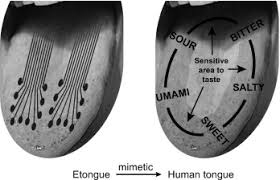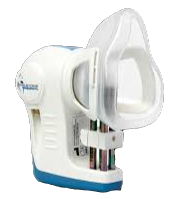Electronic nose & tongue (Advanced Sensor Based Instruments) – Making your meat, poultry & fish safer by the hour
- Nelson Quarshie Attipoe
- Jul 3, 2024
- 3 min read
Updated: Nov 6, 2024

You would be surprised how many meals come with chicken, meat, fish, and their numerous processed forms, just name them. Who would not want their food to be safe? Making sure that our everyday meat and fish are of a strict high quality is a critical aspect of food safety and food quality, with key indicators that include their chemical composition and sensory attributes.
These parameters provide crucial information about their nutritional value, safety, and consumer acceptance. However, conventional techniques for evaluating these indicators present significant challenges in terms of their technical complexity, time-consumption, and economic feasibility.
It is undeniable that popular conventional techniques such as proximate analysis, chromatography, and the use of trained sensory panels have proven a competitive level of effectiveness over the years, but they often require specialized equipment, extensive sample preparation, and expertise. These then present challenges, especially in industrial settings, when it comes to routine quality control and limits the accessibility of comprehensive quality assessment for smaller and start-up producers globally, particularly in developing regions.
It is therefore urgent for attention to be directed towards the development and validation of innovative and “all-round” efficient assessment methods. Emerging technologies such as spectroscopic techniques (e.g., near-infrared, Raman), electronic noses (e-noses) and electronic tongues (e-tongues) [sensor-based instruments], and rapid sensory evaluation protocols have shown promise and have given the food industry and stakeholders hope. Not only have they introduced a faster and more cost-effective ways of analysing quality indicators including chemical composition and sensory attributes of foods such as meat and fish but have given the industry user-friendly alternatives. Now even smaller and start-up food producers have the potential of ensuring an efficient quality assessment across the production chain, enabling real-time monitoring and decision-making.
Advanced technologies, particularly electronic tongues (e-tongues) and electronic noses (e-noses), have gained significant attention in various industries due to their remarkable attributes. These systems mimic biological systems and offer a high sensitivity, customizability, rapid analysis, and are cost-effective, these are part of what make them valuable tools for quality assessment. While their applications in pharmaceutical, cosmetic, and food sectors have been widely reported, their utilization in meat and fish quality evaluation remains limited and fragmented. This research gap is due to the complexity of meat and fish matrices and the need for rapid, non-destructive quality control methods. Exploring the potential of e-tongues and e-noses in this domain could revolutionize quality assessment protocols, enhancing food safety and consumer satisfaction in the meat and fish industry.
A research paper by Zaukuu et al. (2020) reported that over ninety research papers have observed that an arsenal of chemometric tools have been pivotal in applying these instruments for rapid quantitative, qualitative, and predictive analysis of some physical properties, chemical properties, storability and the authentication of meat and fish.
E-tongues and e-noses do not need chemicals to function, and this makes them environmentally friendly. The study further illustrated that both tools are known for giving accurate and consistent results when measuring food properties. While e-tongues and e-noses are useful, e-noses might be better for checking meat and fish quality.
The reason is because e-noses can detect the specific smells that come from meat and fish as they age or spoil. Volatile compounds that produce different smells at different time points can indicate how fresh the food is.
E-noses can quickly analyse these smells without direct contact with the food, which further increases the chances of reducing contamination of the meat and fish samples and keeping them safe to eat.
Unlike the e-tongue, e-nose requires no liquid sample preparation and portable versions enable more rapid remote analysis of meat and fish samples that contributes to cutting down on the substantive cost of transferring meat to laboratories for more stringent analysis. They can also spot differences between distinct types of meat or fish, helping to ensure food quality and prevent fraud. As research continues, e-noses could become a key tool for making sure the meat and fish we eat are fresh and correctly labelled.
Going forward, it would be more helpful if future research in this area focuses on:
1) Optimizing non-destructive sensing technologies for on-line applications,
2) Developing robust chemometric models for accurate prediction of quality parameters,
3) Integrating artificial intelligence for automated sensory evaluation,
4) And validating these novel methods against established techniques across diverse food products such as meat and fish.
Reference:
Zaukuu, J. L. Z., Bazar, G., Gillay, Z. and Kovacs, Z. (2020). Emerging trends of advanced sensor based instruments for meat, poultry and fish quality–a review, Critical reviews in food science and nutrition, 60 (20), pp. 3443-3460.
Did you find this post useful?
YES
NO



Comentários